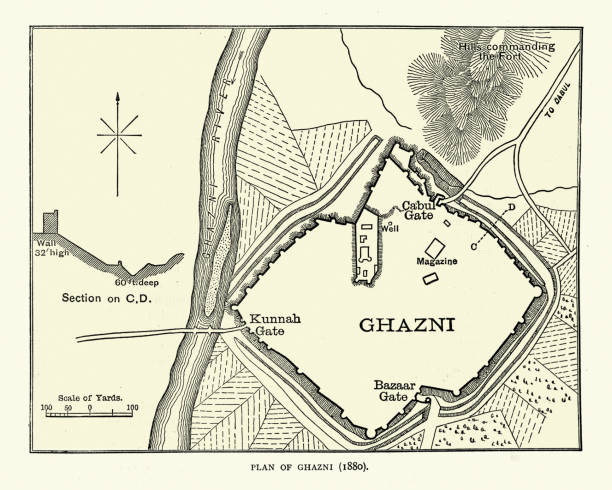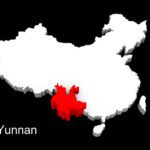The Center for the Scientific Study of Families reports are designed to provide relevant information about the conditional state of families in a specified context. The report provides information such as population, culture, family structure, and family life.
Family reports are an important tool for improving the lives of families. By providing information about the family’s conditional state and context, family reports can help improve communication between families and service providers and lead to better outcomes for families and children.
Introducing Ghazni, Afghanistan
Ghazni Afghanistan is a city in southeastern Afghanistan with a population of around 1,169,000 people. Situated on a plateau at 2,219 meters (7,280 ft) above sea level, the capital city of Ghazni, which is also named Ghazni, is 150 kilometers (93 mi) south of Kabul. According to the Naval Postgraduate School, the topography of Ghazni is composed of arid and level land towards the southeast and more wet and mountainous territory in the northwest.
Ghazni is a major trading and agricultural center. Agriculture and animal husbandry are the primary occupations of the citizens of Ghazni. Wheat, alfalfa, melons, and almonds are among the largest crops produced. It is also known for its architectural heritage. It is home to a number of historical monuments, including the famous Ghazni Minarets and the Tomb of Sultan Mahmud of Ghazni. Also found in Ghazni is the Citadel, which was a historical fortress that played a crucial role in the city of Ghazni’s defense.
Cultural and Ethnic Diversity

Ghazni / Afghanistan: Women walk over the wall of Ghazni Citadel. The women wear blue burqas (burkas), traditional in Central Afghanistan. Afghan women in local clothes Ghazni.
Ghazni, Afghanistan, is a multi-ethnic city with a diverse range of cultural groups. The two largest ethnic groups in Ghazni are Pashtuns and Hazaras, who together make up about 90% of the population. Using an ethnic breakdown of the province, there are also smaller populations of Tajiks, Uzbeks, and Sikhs. Brief overviews of each ethnic group are as follows:
Pashtuns: Pashtuns are the largest ethnic group in Afghanistan, and they make up the majority of the population in Ghazni. They are a Sunni Muslim people who speak Pashto, which is the national language of Afghanistan. Pashtuns are traditionally a nomadic people, but many have settled in cities in recent years.
Hazaras: Hazaras are the second-largest ethnic group in Ghazni. They are a Shia Muslim people who speak Hazaragi, which is a dialect of Persian. Hazaras are traditionally a farming people, and they are known for their distinctive physical features.
Tajiks: Tajiks are the third-largest ethnic group in Ghazni. They are a Sunni Muslim people who speak Tajiki, which is a dialect of Persian. Tajiks are traditionally trading people, and they are known for their sophisticated culture.
Uzbeks: Uzbeks are the fourth-largest ethnic group in Ghazni. They are a Sunni Muslim people who speak Uzbek, which is a Turkic language. Uzbeks are traditionally a farming people, and they are known for their strong sense of community.
Sikhs: Sikhs are a small minority in Ghazni. They are a religious group who follow Sikhism, which is a monotheistic religion that originated in India. Sikhs are known for their distinctive turbans and their commitment to social justice.
The different cultural groups in Ghazni have their own unique customs and traditions. However, they also share a common history and culture, which has been shaped by the city’s strategic location and its role as a major trading center.
Family Demographics
In general, family life in Afghanistan is deeply rooted in cultural and religious traditions. Elders hold significant respect and authority within the family structure. Strong family ties and communal support are essential for social cohesion and mutual assistance, particularly in times of need or crisis. In 2008, the average household size was reported to be 8 people, with nuclear families being the most common.
Specific information regarding marriage and divorce rates in the province was unobtainable. However, a 2017 Afghan news article reported that divorce rates were on the rise. The Naval PostGraduate School lists the literacy rate at around 22%, which is lower in rural areas and for women. A 2023 report noted the lack of school buildings in Ghazni, where 7,000 students are currently studying at 13 schools.
Conclusion
Family life in Ghazni, Afghanistan, is influenced by cultural and ethnic diversity, as well as broader societal and historical factors. The province’s families exhibit a strong sense of unity, respect for tradition, and close family ties. However, challenges related to conflict, education, and economic opportunities continue to impact family dynamics in the region. As Ghazni’s families navigate these complexities, preserving cultural heritage and supporting one another remain essential pillars of their resilience.





